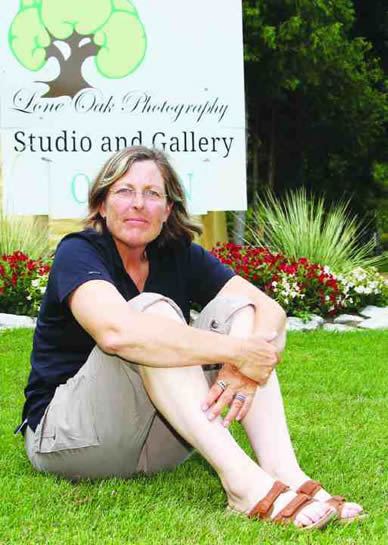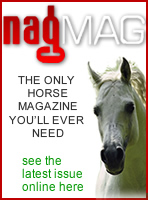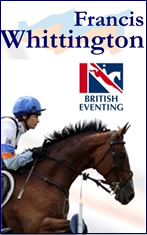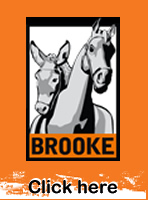
And photographs, if you have any.
Horseytalk.net Special Interview
Mary White
This photographer has horse sense
 Mary White has travelled the world, taken photos of elephants and aerial shots of Haiti. But her favourite subject is neither human nor exotic: it's the horse.
Mary White has travelled the world, taken photos of elephants and aerial shots of Haiti. But her favourite subject is neither human nor exotic: it's the horse.
White is a skilled photographer who shoots portraits, weddings, and commercial productions. But she's developed a specialty in a niche area: equine photographer.
"I think every little girl grows up loving horses," she said. "Kids see the beauty. My grandfather and uncle raced horses, Standardbreds. I've always loved the critters."
She's also proud of her military life, which began as a teen in the 1970s.
"When I was 14 I joined the Air Cadets Squadron 58 in Kingston," she said. "Because of my experience with the cadets and reserves, I decided to join the military."
Her first posting was to 424 Squadron in Trenton as an air frame technician, helping to design and improve aircraft.
"I enjoyed the concept and was involved with search and rescue," she said. "I enjoyed being a technician, but I wanted to be in the action."
She was introduced to tactical aviation and was accepted into the flight engineer program in Edmonton.
"The hours were long, life was dirty, but I knew I was helping the troops."
From Edmonton, she was transferred to CFB Valcartier in Quebec.
"I became passionate about my trade," said White. "We helped people during the floods in Chicoutimi and also did things like forest fire work. We were making a difference at home."
She also helped a lot of people in other areas like Haiti and Africa.
In 1983, her parents gave her a camera. Unlike today's equipment with short term and built-in obsolescence, that camera still works.
"It was just a hobby at first," she said. "I brought out the camera for scuba diving or camping."
Things got a little more serious when she went to Africa for six weeks in 1992.
"I worked in Nairobi," she said. "I had my camera and went to treetops. All the animals came toward me. You can see elephants approaching. I thought, 'This is kind of fun.'"
In 1992, during a stint in Haiti, she brought out her camera again, taking aerial photos as well as images of locals on the ground.
That same year, she bought her first horse when she was in Edmonton.
"There was a nice riding club there," said White. "My first horse was George. He had a heart of gold. I kept him until he passed away."
White also became heavily involved in teaching student flight engineers and monitoring training trips for pilots.
"The military is big on mentorship," she said. "When you're the flight engineer, you're very independent. You've basically got two drivers, the engineer and the aircraft. Preparation and training for that role are crucial."
To have anything to do with air work in the military requires constant physical monitoring. Unfortunately, Mary White did not pass a physical and was released from her position.
"The military provides a rehabilitation program for people who are medically released," said White. "I decided to be a photographer when I grow up."
At the end of her 28-year military career, she was able to work for six months at Base Imaging at CFB Kingston.
On weekends, she combined her passions, taking photos at dressage competitions.
"It was all for fun," she said. "I was still in the military."
Without thinking about it, White used her military skills in photography. Observation skills are critical for flight technicians. So is awareness of light. Same goes for photographers.
"I had an amazing career, I've gone through the Rocky Mountains in a twin huey, flown 15 feet above the ground at 80 knots, rappelled, and operated with night vision. People pay to do that kind of thing. Horses are a different kind of passion. Flying is an adrenalin and analytic passion. Horses are a beauty passion."
After her medical release from the military, she completed a photography certificate program at Ryerson University in Toronto, driving back and forth one to three nights a week.
"I didn't realize I had the eye, the understanding of light," she said.
She started to get positive feedback and high praise for her work. She also landed the front cover of Horse Sport Magazine. She took courses in weddings and portraits and discovered that she excelled.
"I thought, 'hey, I can do this.'"
After gaining considerable experience, she contacted Cara Whitham, a Canadian who has served as a judge at the 2004 Olympics and worked as an equestrian TV commentator at the 2004, 2008 and 2012 Olympic Games.
"She runs international competitions in Canada," said White.
Whitham was impressed.
"I was her full-time competition photographer last year," said White. "This involved Canada's best dressage riders."
She's also done work for judges from Brazil and Germany. Because of the Olympics, she's only covered one international competition in Canada this year.
She wanted a place to show her work, so converted part of her home to a gallery, and another part to a studio.
"I'm quite comfortable doing studio work," she said.
The garage, attached to the house, became her studio.
"My truck doesn't fit in the garage anyway. I had to use it for something."
She worked with colleagues at CFB Kingston to make sure her studio would meet pro standards. She does both studio and environmental portraits.
"My priority from May to September is horses," said White. "I want to get the studio going more for spring, fall and winter. I'm not out to have people lined up for 15-minute specials. I study the person and face the way I'm trained to study. A good portrait takes time."
She recently opened her gallery and set aside space for fellow artists.
"I didn't want to be selfish. I wanted to have space for others to show their work."
Also on display are stunning equestrian paintings by Kristie Kendall and artwork by Bonnie Brooks.
"Kristie produces life-like portraits of horses and small animals, dogs," said White. "Her horses are set up in beautiful positions to show the animal at its best. Her background with horses has given her the ability to paint the most difficult parts of the horse like hocks, legs and eyes, in an anatomically correct manner. Her knowledge of colour allows her to paint the horse's true colouring."
She said that Bonnie Brooks is displaying some of her works that use new techniques.
"She is now working with decoupage. She is also showing leaf/tree works done in oil. I know that I am lucky to have both these artists showing here."
She still does some photography work at CFB Kingston for things like mess dinners and graduation parades.
"They allowed me to get where I am," said White. "The military gave me a good base, skills, tools and good friends. I have proud memories and I want to give back to them."
Would Mary White like to be a photographer at the 2016 Olympic Games equestrian events?
The corner of her lips moved upward at the suggestion. I'm guessing she wouldn't turn down the request. I'll be cheering for her involvement.
For more information: www.loneoakequinephoto.com






